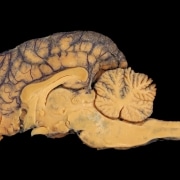The cerebellum and addiction
This is not my first blog post on the non-motor roles of the cerebellum and, based on where research is heading, it won’t be my last!
New research is hinting at the fact that the cerebellum may actually play a role in reward-seeking and social behaviours.
We already know that the cerebellum is involved in cognitive functions, such as language, learning and attention. It is researchers at the Albert Einstein College of Medicine in Bronx, NY, that suggest it could also regulate reward-processing and addiction.
The results of the study performed on mice were published recently in the journal Science.
Some studies have found that the cerebellum does not function properly in people with addictive behavior, autism spectrum disorder (ASD), cognitive affective syndrome, and schizophrenia.
Other MRI studies have shown that the cerebellum of people living with addiction is hyperactive in response to stimuli that their addiction relates to.
Since the ventral tegmental area (VTA) is implicated in reward processing, scientists hypothesized that the neurons in the cerebellum would somehow communicate with the VTA neurons, which are responsible for releasing dopamine.
The scientists tested their hypothesis. They found out that a third of the neurons in the VTA respond to the cerebellum. The next step was to figure out if this connection affected reward-seeking behavior.
Experiment 1
Rodents were free to explore all four corners of a room. When they would reach one specific corner, the researchers stimulated the rodent’s cerebellar neurons. The hypothesis was that, if the stimulation were pleasurable, the rodents would continue to seek the reward behavior. In a nutshell, they would repeatedly go back to the corner where they received the pleasurable stimulation. This is what happened.
Experiment 2
Next, to confirm that stimulating the axons of the cerebellar neurons played a role in addiction, the researchers conditioned the mice to receive pleasurable stimulation of these axons in a brightly lit area.
One needs to know that mice typically avoid bright lights. That being said, in this experiment, the mice chose to go against their usual preference, for the sake of pleasurable stimulation. This suggests that the cerebellum plays a role in addictive behavior, according to professor Khodakhah.
Experiment 3
In this third experiment, researchers put mice in a box with three chambers. The rodents had the option to interact with an object, another mouse, or be alone in an empty area.
When they chose to interact socially, the cerebellar axons-VTA neurons pathway was most active. When this neuronal pathway was silenced, the rodents either chose to be alone or to interact with the inanimate object.
These results suggested to the researchers that the cerebellar axons-VTA neurons pathway might be dysfunctional in people with ASD.
https://ac.els-cdn.com/S096098220701785X/1-s2.0-S096098220701785X-main.pdf?_tid=018dd887-7b00-4e37-831b-3ab8e39c54e5&acdnat=1550356241_9efa95aed2d3ead5311003e13620c6a4










Leave a Reply